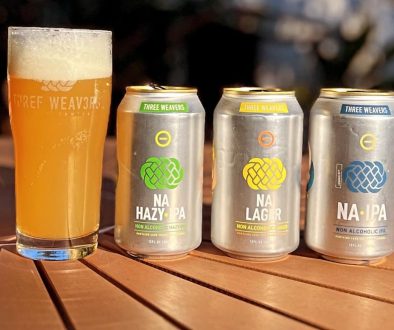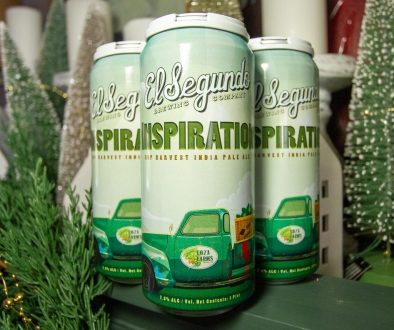Is the San Francisco Bay Area Too Expensive for Beer?
The San Francisco Bay Area is, by most reasonable and unreasonable measures, spendy. This summer, The Mercury News reported that the nine-county Bay Area region was seeing all-time highs in housing prices—$800,000 as the median price for a previously owned, single-family residence in the region—while in late summer Business Insider reported median prices for such homes in both San Francisco and San Mateo counties were exceeding $1.4 million… A recent study from UK-based realty company Nested found San Francisco to be the most expensive rental market in the world, surpassing even New York City, Hong Kong and Dubai. Pricing and affordability have been an increasing concern for many of us living throughout the Bay Area, and key brewery closings and transactions in northern California in 2017 brought up a reasonable question about the larger scene: Is the Bay Area getting too expensive for beer?
Specifically: Is the San Francisco Bay Area becoming prohibitively expensive for brewing?
The nine counties of the Bay Area—San Francisco, Marin, Sonoma, Napa, Solano, Contra Costa, Alameda, Santa Clara and San Mateo—are home to more exceptional breweries than one could expect to list here. Anchor Brewing Co. in San Francisco. Russian River Brewing Co. and Bear Republic and Lagunitas in Sonoma County… We’re barely even scratching the surface. There are currently 31 breweries in the San Francisco Brewers Guild (representing the vast majority of operating breweries in San Francisco), and the guild’s executive director Joanne Marino estimates easily 150+ in the surrounding region. The guild’s enrollment had added many new members in 2015 and 2016, nearly doubling over the span of a few years. But Marino expects the numbers are plateauing. “I think what we’re seeing now is the space is getting more crowded, and people have to really be committed and want to be able to do this.” Marino expects only a few new members in the Guild over the next six months or so.

“Without a doubt, the cost of doing business here is very high,” she noted. “That translates into everything from the rent to finding quality people and being able to keep them. There’s no doubt that the high cost of living here is a real challenge for young breweries.”
California as a whole is still seeing steady growth in brewery numbers. Tom McCormick, the executive director of the California Craft Brewers Association, emphasized that the state as a whole was still seeing steady growth at the rate of about two new breweries every week. This has been true for the last four or five years, though McCormick expects a slight slowdown in new openings from that current rate. California’s brewery count today sits above 850, and he anticipates that over 100 new breweries will have opened statewide over the course of 2017. McCormick added that closings have increased, but remain very few in number. He had not yet seen any evidence of specific regions standing out as having more stagnation or closings.
McCormick echoed Marino’s assessment of the Bay Area scene, citing the cost of real estate and maintaining a viable workforce as two of the biggest challenges for breweries there, and noted that many had employees traveling significant distances through public transportation to get to work. McCormick noted the regulatory structure tended to be more costly for the Bay Area relative to other parts of the state—but it’s a distant third in terms of the region’s challenges. Aside from San Francisco, he pointed to Santa Barbara and the coastal areas near Los Angeles as being the only other parts of the state posing similar challenges to breweries.
On the other hand, McCormick emphasized that it’s been getting more difficult statewide to get a brewery off the ground, given the increasing competition overall and increasing cost of doing business in California in general. Despite the higher costs, McCormick indicated he’d not heard of any breweries that were, for example, considering leaving the Bay Area, but that some local breweries looking to expand were considering locating that expansion elsewhere.
Almanac Beer Co. had considered San Francisco as a home for their in-progress production facility (which will be coming online in Alameda later this year), but the East Bay was just far more reasonable in terms of real estate. “We would have loved to have opened something in San Francisco,” Almanac’s co-founder and brewmaster Jesse Friedman stated, “but opening an industrial production space in San Francisco is just not a great use of resources. The cost of doing business inside the city limits is so dramatically higher than anywhere else.” (He also noted: “The fermenters don’t really care how trendy of a neighborhood they’re sitting in.”)
The historic details of Alameda and a dense surrounding community of makers and distillers provided an appealing fit for Almanac (they’ll be sharing a building with Admiral Maltings, a new malting company catering to craft brewers), and they’re paying about a third of the rent prices they were seeing for comparable digs in San Francisco. Almanac currently has staff in San Jose, San Francisco and remotely, and the new Alameda facility will allow them to bring that staff together under one roof going forward (aside from their San Francisco taproom). The brewery’s also been exploring selling their beers online directly within California, which increases their overall margins and allows them to interact one-on-one with their customers.
“Whether it’s our forklift driver, our dishwasher, our VP of finance, or whether it’s Jesse and myself,” said Almanac’s co-founder and CEO Damian Fagan, “everybody is facing the same challenge, which is—How do I make ends meet in an environment where the cost of living continually goes up significantly?” Fagan, like a number of others, highlighted the challenges of staffing: “We have people who leave the beer industry altogether, and get involved in the tech or startup world in one way or another, because the compensation disparity is so great.”
“For us, it’s a challenge to attract really skilled talent at rates that fit the beer model.”
21st Amendment Brewery opened a production facility in San Leandro (10 miles southeast of Almanac’s new space) about two years back, making the majority of their beer in that facility after having partner-brewed their canned beers at Cold Spring Brewing Co. in Minnesota for years. Co-founder Nico Freccia feels constraints of operating in the Bay Area are increasing. “When we are looking for certain types of employees, for in the lab or brewing, that have to have a certain level of craft-beer experience, it’s just harder to attract people from other parts of the country because of the cost of living,” Freccia said. But he also commented that some communities around the Bay Area still seemed underserved, noting that smaller-scale tasting rooms—where most of the beer produced on-site is sold on-site—were doing well. “I think there’s always a place for that, and I think that’s the model we’re seeing all over the country.”
Marino (of the San Francisco Brewers Guild) echoed this sentiment of many neighborhoods around the Bay Area still being underserved in this regard, and Fagan mentioned the scale of brewing projects in the region seemed to be decreasing on the whole, in favor of these small and hyper-local establishments. Smaller footprints. Better margins on product sold directly.
While the cost of operating in San Francisco wasn’t cited as a direct cause of Speakeasy Ales & Lagers’ recent financial challenges (the entity closed briefly earlier in the year before being revived under new ownership), “it certainly doesn’t make it easier,” commented Speakeasy’s director of brand strategy & media Brian Stechschulte. The brewery is currently focused on building back up their core flagship brands, but is also closely watching over how the winds are shifting for the industry. “There’s just a different business model out there right now,” Stechschulte explained, “which is small, self-distribution, small runs of cans direct from the taproom. And Speakeasy was built on a different model and a larger footprint.” As things go forward, they’re considering more small-batch releases and tweaking their original model.
On the whole, the Bay Area is becoming a very interesting microcosm of what the future of beer may hold for other highly competitive markets around the country. As Freccia from 21st Amendment framed it: “Find a neighborhood that’s not served. Make the best quality beer that you can possibly make. And expect to sell it on a very small, micro, local level.”
Ken Weaver is a full-time beer writer in Petaluma, California. He’s the author of The Northern California Craft Beer Guide and most recently served as beer editor of All About Beer Magazine.
Anchor Brewing Cites Difficult Market Conditions As Reason for Sale
https://thefullpint.com/beer-news/speakeasy-ales-lagers-back-business/




October 30, 2017 @ 9:06 am
All breweries are welcome in Lodi! Industrial space available, low rent, skilled labor, affordable housing, hip downtown area, and a built in visitor base with over 60 wineries.
October 30, 2017 @ 8:49 am
Just as with the restaurant business in the Bay Area, the best breweries rise to the top and the has-beens pass into brewing history. With innovators emerging like Cellarmaker, Faction, and Fieldwork there will occasionally be a Speakeasy. Beer geeks respect Anchor for their historical role but few consume their products very often. I’m personally a big fan of Russian River but with about 50 Norcal IPAs better than Pliny on my store shelves I will leave any bottles I see for the cult to enjoy.
October 31, 2017 @ 4:31 pm
Not quite sure how valid that is. With land prices so high and other regulatory costs so prohibitive, just saying “the best breweries rise” may well not be valid. Those costs are inhibitors to new businesses, which may well be among the best, but if they can’t even start in SF, how can they rise? In an environment like SF, it’s not always the best that rise, but those that cater to specific clientele; this does not indicate the best, but rather the one that can cater. Is Fox the best just because they cater to a specific audience? MSNBC? No – they just cater. 🙂 Does Hershey’s make the best chocolate, or do they just cater to the larger audience?
Production breweries either strike a deal with the city for kickbacks and find a way to minimize their rent OR they find a lower cost area in which to locate – like the aforementioned Lodi.